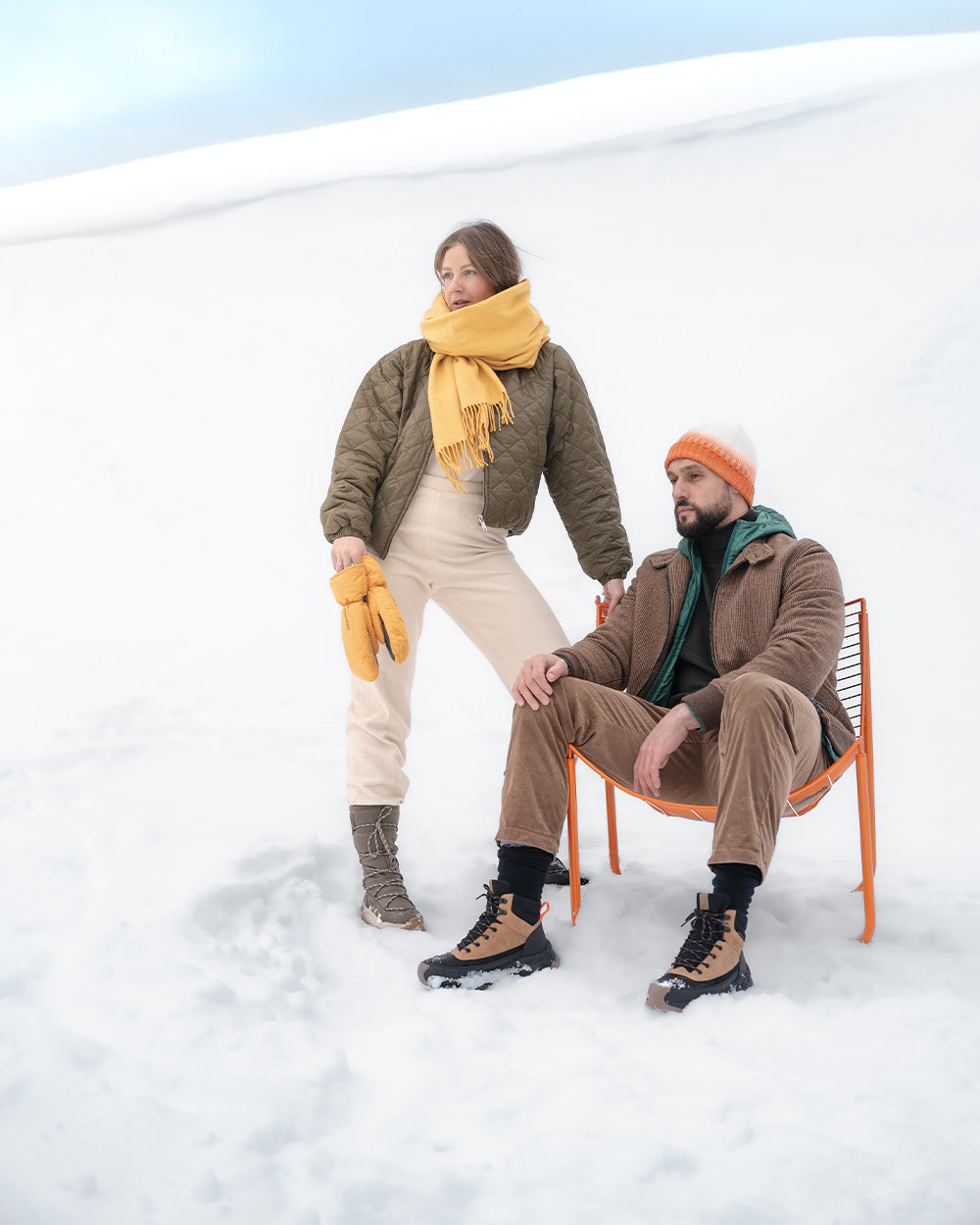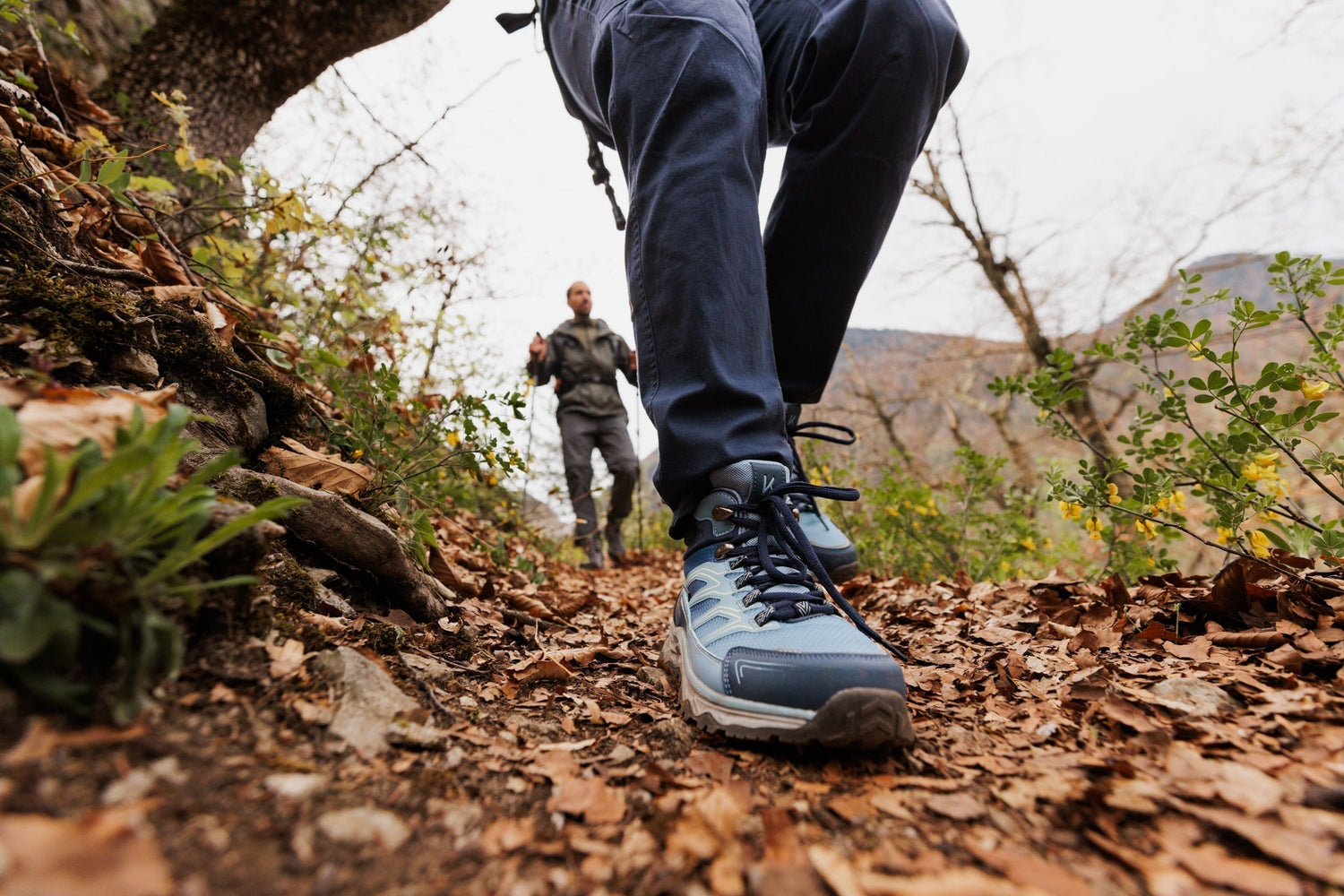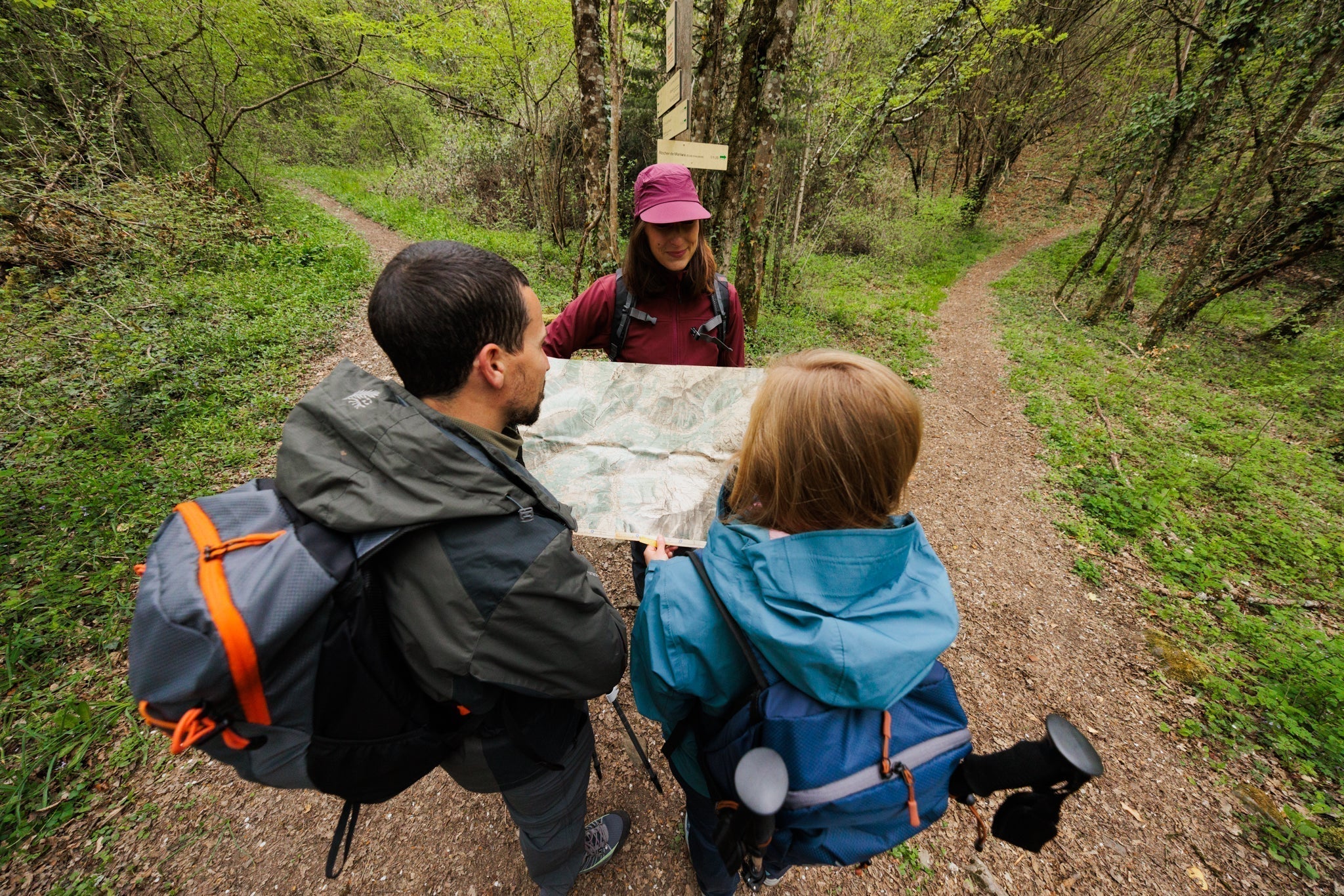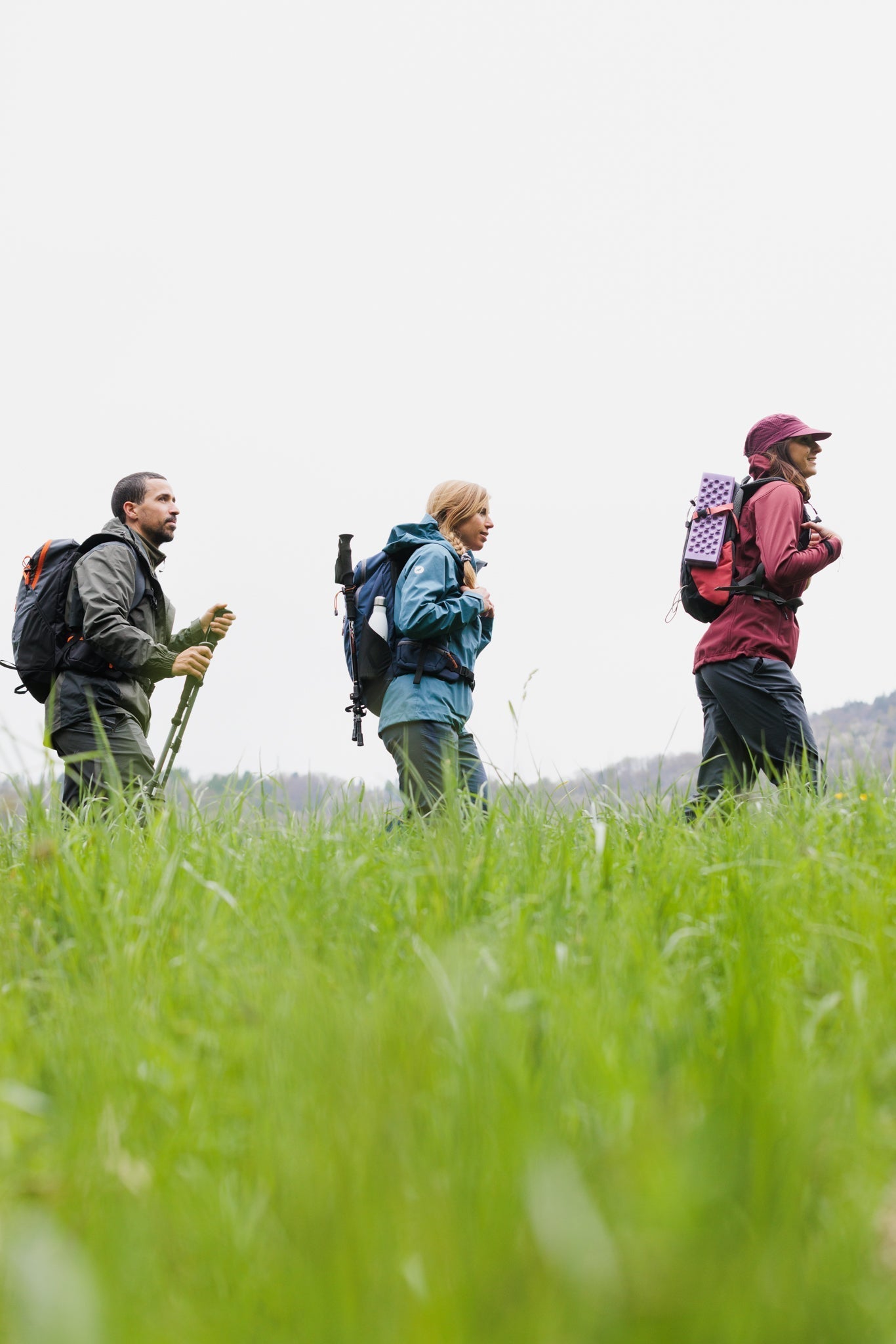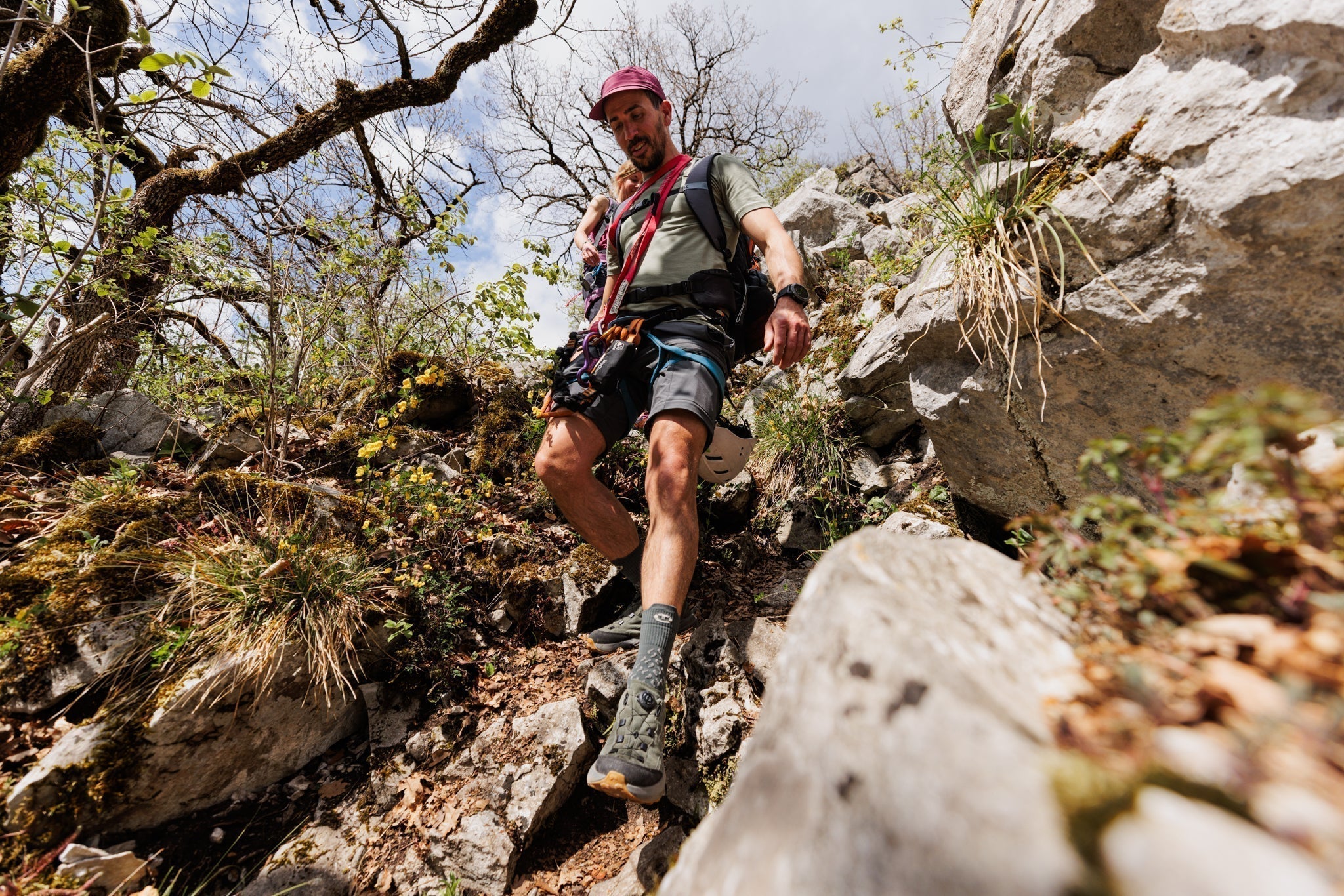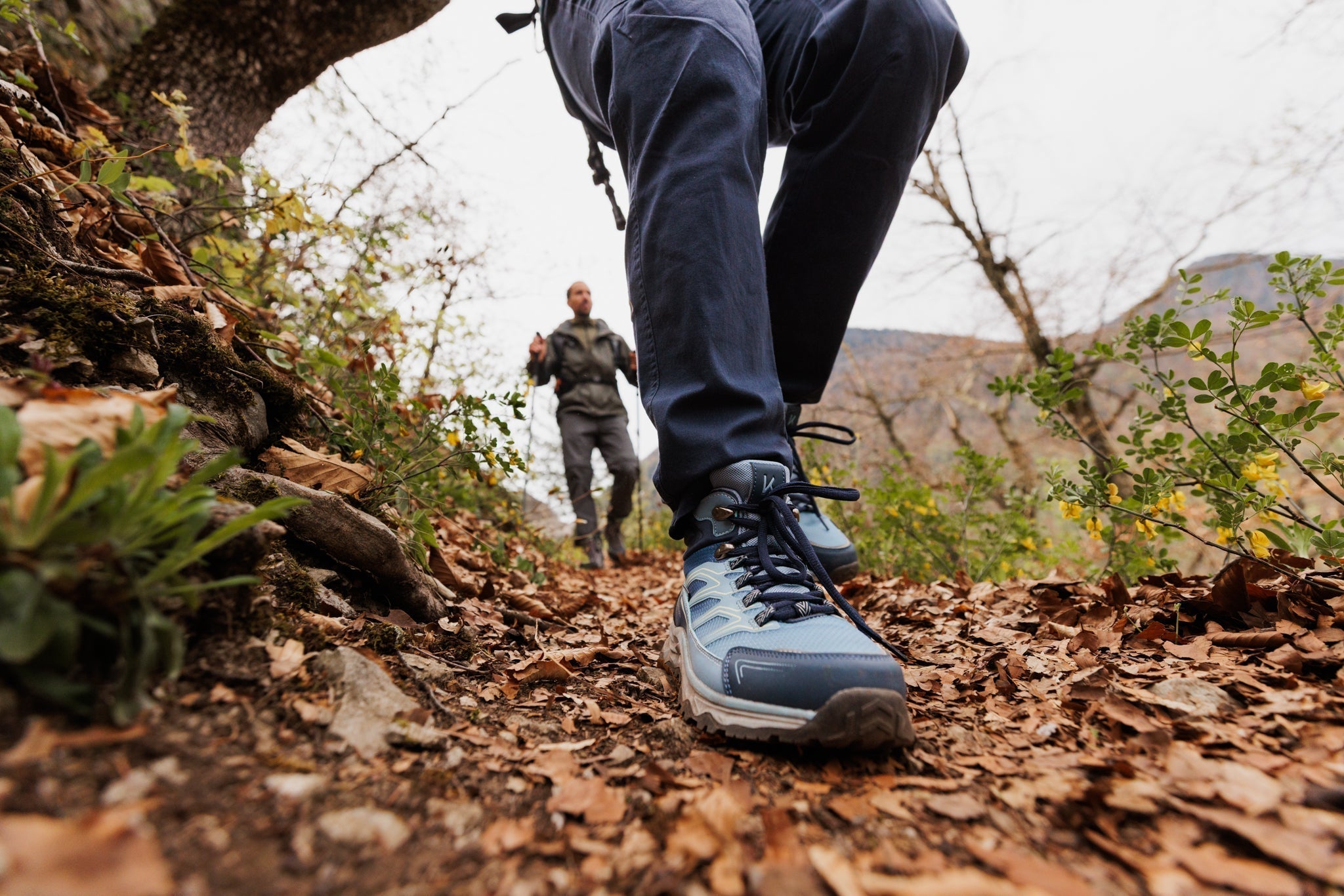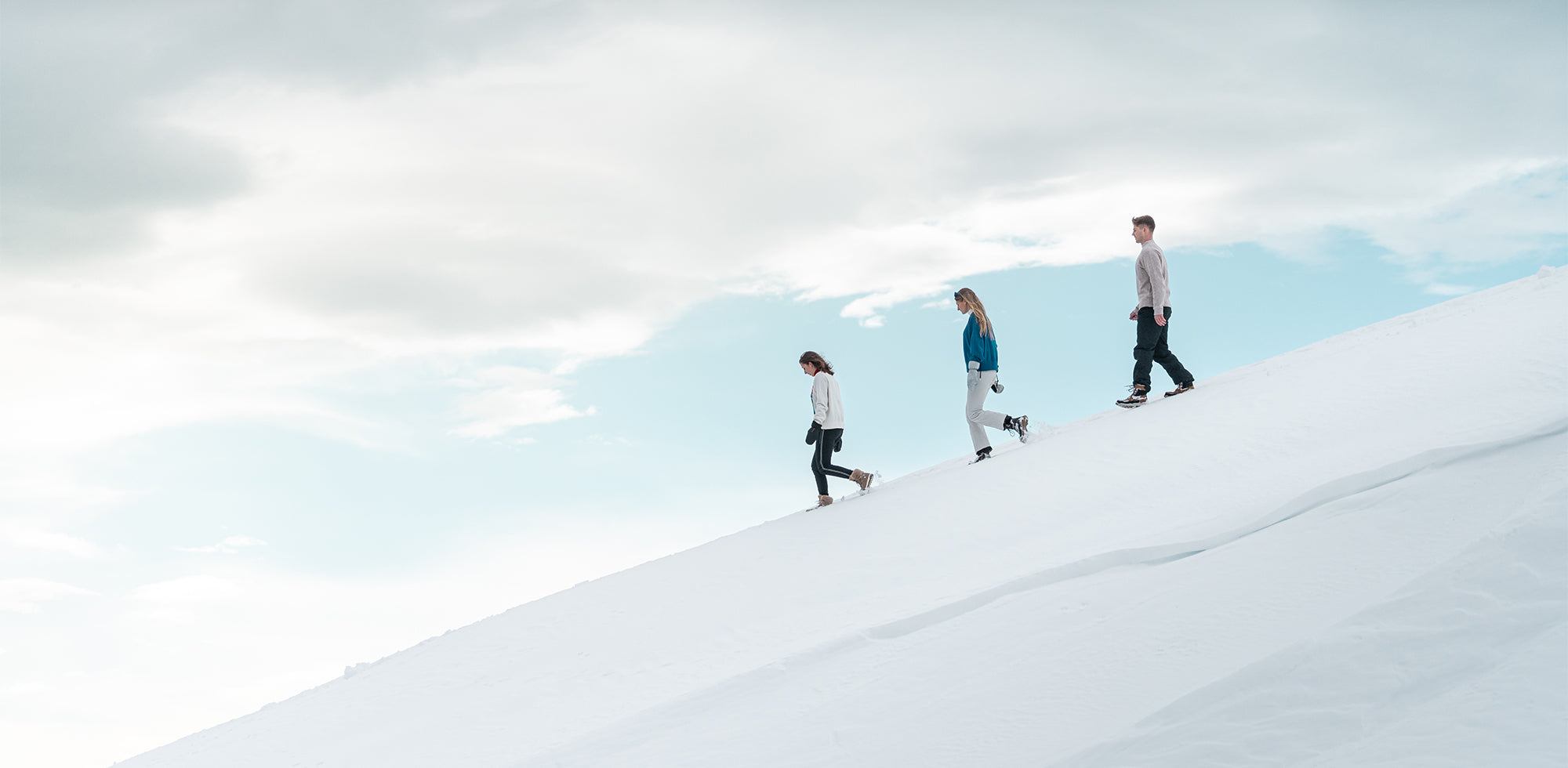Who has never regretted the night before's outing, with stiff legs when they woke up and feet still burning?
After a trek or hike , recovery is just as important as the effort itself. Without it, muscle aches set in, fatigue lasts longer, and the next outing becomes less enjoyable.
Recovering well means helping your muscles relax, your joints breathe, and your energy return faster. Stretching, hydration, nutrition, sleep... a few simple steps can make all the difference.
And if you get into the habit of incorporating them into your hikes, you'll get more out of each outing and get back on the trails more easily.
01. Stretch without forcing
After a hike or trek, your muscles have endured climbs, descents, and sometimes several hours of walking with a pack on your back. Stretching helps release tension and limit muscle soreness, as long as you do it gently and without strenuous exercise.
Focus on the areas that work the most:
➜ calves (leaning against a wall or a stone, heel on the ground, leg straight)
➜ the quadriceps (standing, grab your ankle and bring your foot towards your buttock)
➜ back and shoulders (hands crossed above the head, pull upwards then slightly to one side, then to the other)
Hold each position for 20 to 30 seconds, breathing calmly. The goal is not to force the stretch but to give your muscles the signal that they can relax.
These few minutes are enough to make a difference.
02. Hydration and nutrition: the keys to regenerating your body
After a trek or a long day of hiking, your body has lost water and minerals. The first step is to hydrate well, taking small, regular sips, and not just when you're thirsty. If you've been sweating a lot, also consider electrolytes (isotonic drinks or mineral-rich sparkling water).
When it comes to food, choose meals that help your muscles repair and your energy reserves replenish:
➜ carbohydrates to replenish glycogen (pasta, rice, potatoes, wholemeal bread)
➜ proteins for muscle recovery (eggs, legumes, fish, white meat)
➜ fruits and vegetables for vitamins and antioxidants
A simple snack right after your walk can also make a difference: a banana, dried fruit, or a cereal bar. Your body recovers better when you give it something to quickly recharge its batteries.
03. Active rest: move gently to restart circulation
After a long walk, the urge to collapse is strong. However, staying completely still doesn't help your muscles recover. Active rest involves continuing to move, but gently, to boost circulation and reduce the feeling of heavy legs.
➜ a gentle walk of a few minutes to prevent the legs from becoming heavy
➜ some simple mobility movements like rotating the ankles or bending and straightening the knees
➜ a few minutes of cycling without resistance or even dynamic stretching
➜ if you are near a lake or river, walk a little in the cold water to stimulate circulation
These gentle movements help your muscles eliminate waste produced during exercise more quickly. You recover better and avoid that stiff-legged feeling the next day.

04. Restorative sleep: the hiker’s best ally
After a trek, nothing regenerates like sleep. It's during the night that your muscles rebuild, your joints loosen, and your energy returns. A good night's sleep is often worth more than a long stretching session or a massage.
To put all the chances on your side:
➜ Hydrate yourself before sleeping but avoid excess water just before going to bed
➜ Choose a light but complete meal , without too much fat or alcohol
➜ ventilate your room or tent to promote a cool temperature
➜ limit screens, which delay falling asleep
Quality sleep will allow you to get back on the trails faster, with lighter legs and a more alert mind.
05. Bonus gestures to optimize recovery
In addition to the basics, there are some simple actions that can really speed up recovery.
➜ Cold: A foot bath in cold water or a cool shower on the legs helps reduce aches and inflammation.
➜ Heat: A hot water bottle or a hot shower relaxes stiff muscles and promotes circulation. Alternating between hot and cold can also be effective.
➜ Self-massage: Using a roller, a tennis ball, or even your hands, massage your calves, thighs, and the arch of your foot. This stimulates circulation and helps your muscles relax.
➜ Elevate your legs: Lying down, place your legs against a wall or on your backpack. This helps venous return and reduces swelling.
➜ Gentle evening stretches: a few minutes before going to sleep helps prevent you from waking up at night with cramps.
These small gestures improve comfort and better prepare your body for the next outing.
06. Prepare well for the next outing upon recovery
Recovery isn't just about healing your muscles after a long walk, it's also about preparing for the next one. As soon as you get back, take the time to check your equipment: shoes , insoles , technical socks, backpack . Equipment in good condition reduces fatigue and limits the risk of injury.
Also think about your feet: treat blisters, moisturize the skin and change your socks as soon as they are damp to avoid rubbing. Take the time to note what worked well and what can be improved, whether it's the pace, the diet or the weight of the bag .
Preparing for what's next also means listening to your feelings: if you're still feeling too tired, give yourself an extra day of rest. Your body will thank you on the trails.
Want to learn more? Check out our resources:
➜ How to maintain your hiking shoes?
➜ How to avoid blisters when hiking?
To recover is to prolong the adventure
Recovery is also a way to prolong the experience. You stay connected to your sensations, learn to better understand your limits, and prepare for the next steps.
And with shoes designed to limit fatigue and protect your feet, you give your body a real boost to go even further.
Ready to hit the trails again? Find your next hiking boots, for the whole family.
➜ Men's Hiking Collection
➜ Women's Hiking Collection
➜ Children's Hiking Collection

